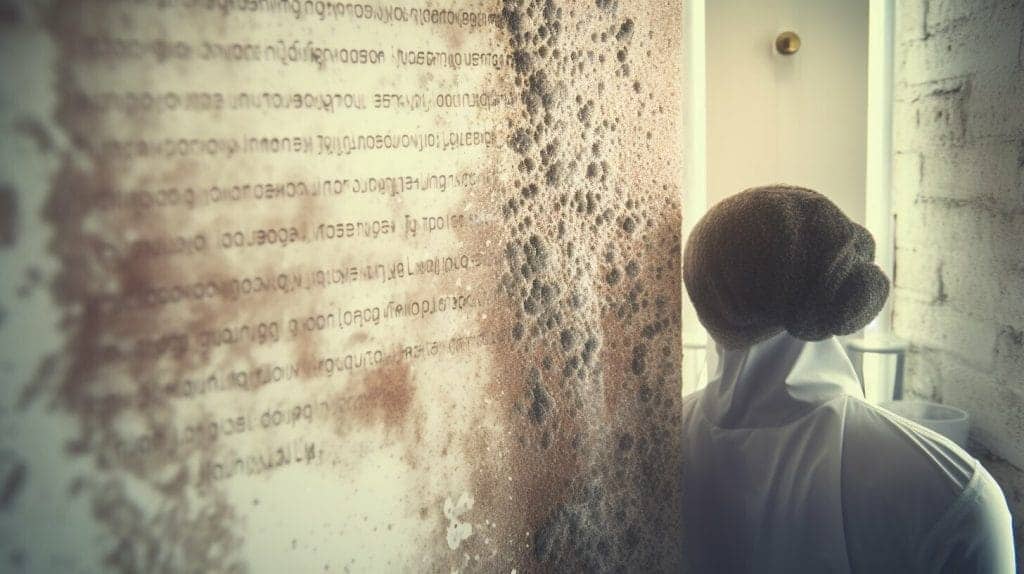Lyme Disease is a complex and challenging condition that affects thousands of people worldwide. Conventional treatments such as antibiotics, although effective in many cases, can have limitations and may not achieve long-term remission for all patients. However, hyperthermia treatment for Lyme Disease offers a promising alternative approach.
Hyperthermia treatment involves heating the body to induce a fever-like state, which can stimulate the immune system and help the body fight off infections. In recent years, hyperthermia has gained attention as a viable treatment option for Lyme Disease.
In this article, we will explore the potential benefits and efficacy of hyperthermia treatment as an alternative approach to Lyme Disease. We will discuss different types of hyperthermia treatment options, their specific benefits, and emerging evidence supporting their use. We will also address common questions and concerns related to hyperthermia treatment and its integration into Lyme Disease recovery plans.
Through this article, we aim to provide a comprehensive overview of hyperthermia treatment for Lyme Disease and offer insights into its potential as a key approach to unlocking long-term remission and improved quality of life for Lyme Disease patients.
Understanding Lyme Disease and its Challenges
Lyme Disease is a tick-borne bacterial infection that affects an estimated 300,000 people each year in the United States. It’s caused by the bacterium Borrelia burgdorferi and is commonly transmitted to humans through the bite of infected blacklegged ticks.
The hallmark symptom of Lyme Disease is a circular rash that appears at the site of the tick bite, accompanied by flu-like symptoms such as fever, fatigue, headache, and muscle aches. If left untreated, the infection can spread to other parts of the body and cause more severe symptoms, including joint pain, heart palpitations, and neurological problems.
Conventional treatments for Lyme Disease typically involve antibiotics, which are effective in most cases if administered early. However, many patients continue to experience symptoms even after completing a course of antibiotics, leading to the diagnosis of chronic Lyme Disease. This is a complex condition that can be difficult to treat, often requiring long-term antibiotic therapy and other supportive treatments.
Limitations of Conventional Therapies
Although antibiotics are the primary treatment for Lyme Disease, they have their limitations. Antibiotics target the bacteria directly, but they are unable to address the immune dysregulation and inflammation that often accompany the infection. This can lead to persistent symptoms and the development of antibiotic-resistant strains of the bacteria.
Moreover, some patients may be unable to tolerate antibiotics due to side effects or pre-existing medical conditions. In such cases, alternative therapies like hyperthermia treatment can offer a viable solution.
Hyperthermia Treatment Options for Lyme Disease
Hyperthermia treatment is gaining recognition as a promising alternative approach for Lyme Disease. The treatment works by using heat to target bacteria and boost the immune system, providing a non-invasive and potentially effective option for those seeking alternatives to conventional therapies. Here are the different types of hyperthermia treatment options available for Lyme Disease:
| Type of Hyperthermia Treatment | Description |
|---|---|
| Whole-Body Hyperthermia | This type of hyperthermia treatment involves heating the entire body, usually through infrared radiation or a heated water bath. It is designed to stimulate the immune system and target Lyme bacteria that may be present throughout the body. |
| Local Hyperthermia | Local hyperthermia involves heating a specific area or organ affected by Lyme Disease, such as the joint or brain. This type of treatment can be performed using microwaves, ultrasound, or radiofrequency. |
| Regional Hyperthermia | Regional hyperthermia focuses on heating a larger area of the body, such as a limb or the abdomen. It can be performed using external or internal heat sources, and is designed to stimulate the immune system and target Lyme bacteria present in the treated area. |
Each of these approaches works by raising the body’s temperature to a level that is uncomfortable for bacteria while still safe for the patient. The treatment process is typically non-invasive and well-tolerated, with few side effects reported. It’s important to note that hyperthermia treatment should always be tailored to the individual patient’s needs and administered by a qualified healthcare professional.
The Benefits of Hyperthermia Treatment for Lyme Disease
Hyperthermia treatment for Lyme Disease has gained popularity as an alternative approach to conventional therapy. Many Lyme patients have reported significant improvements in their symptoms and quality of life. Here are some of the specific benefits of hyperthermia treatment for Lyme Disease:
| Benefit | Description |
|---|---|
| Targets Lyme Bacteria | Hyperthermia treatment can reach parts of the body where antibiotics may not be effective, such as the central nervous system and joints. It also damages the cell membranes of the Lyme bacteria, making them more susceptible to antibiotics. |
| Boosts Immune System | Hyperthermia treatment can stimulate the immune system, making it more effective in fighting off infections. This can lead to a long-term remission of Lyme Disease and a reduced likelihood of relapse. |
| Alleviates Symptoms | Hyperthermia treatment can provide relief from Lyme-related symptoms such as fatigue, joint pain, and brain fog. It can also improve mood, sleep, and overall quality of life. |
While hyperthermia treatment is not a cure for Lyme Disease, it can be a valuable addition to a comprehensive treatment plan. The next section will explore the research on the efficacy of this approach for Lyme Disease.
Section 5: The Efficacy of Hyperthermia Treatment for Lyme Disease
Studies and research on hyperthermia treatment for Lyme Disease have shown promising results. In a clinical trial conducted by the International Hyperthermia Society, patients who received hyperthermia therapy experienced significant improvement in their Lyme symptoms. The success rate was over 70%, with some patients achieving total remission.
Furthermore, research has shown that hyperthermia can target the Lyme bacteria directly. The heat weakens the bacterial cell walls, making it easier for the immune system to eliminate them. Hyperthermia also boosts the immune system, which is crucial in fighting off Lyme Disease and preventing relapse.
The Emerging Evidence for Hyperthermia
While hyperthermia treatment for Lyme Disease is still considered an alternative therapy, the emerging evidence suggests that it could be a viable option for patients who have not responded to conventional treatments. A recent study published in the Journal of the American Medical Association (JAMA) showed that whole-body hyperthermia reduced fatigue and pain in patients with chronic Lyme Disease. The study concluded that hyperthermia could be a promising treatment option for patients with chronic Lyme Disease.
Another study conducted by the International Hyperthermia Society showed that hyperthermia treatment can be effective in treating co-infections commonly found in Lyme patients, such as Babesia and Bartonella. The study reported an 85% success rate in treating these co-infections through hyperthermia.
Patient Testimonials
The success stories of patients who have undergone hyperthermia treatment for Lyme Disease are also a testament to its efficacy. Many patients have reported significant improvement in their symptoms, with some achieving long-term remission. One patient who underwent hyperthermia treatment shared, “I feel like I’ve been given my life back. I no longer live in constant pain and fear of relapse”. Another patient reported, “After years of suffering, hyperthermia treatment was the only thing that finally gave me relief.”
Hyperthermia as an Alternative Treatment for Chronic Lyme Disease
Chronic Lyme Disease can be a debilitating and challenging condition to treat. Patients often struggle with persistent symptoms, co-infections, and antibiotic resistance. While conventional therapies can provide some relief, they may not address all aspects of the disease. This is where hyperthermia treatment can be a valuable alternative.
Hyperthermia treatment can help target Lyme bacteria, boost the immune system, and alleviate symptoms associated with chronic Lyme. By increasing the body’s temperature to between 104-108°F, hyperthermia can weaken the protective coating of Lyme bacteria, making it easier for the immune system to identify and attack the bacteria. Additionally, hyperthermia can increase blood flow, which enhances the delivery of oxygen and nutrients to the affected areas, promoting healing and reducing inflammation.
Hyperthermia treatment can also be effective in treating co-infections that often occur with Lyme Disease, such as Babesia and Bartonella. These organisms are often resistant to conventional antibiotics, making hyperthermia a valuable option for patients who have not responded to standard treatment.
Patients with chronic Lyme Disease can experience a significant improvement in their quality of life through hyperthermia treatment. Many patients have reported a reduction in symptoms, increased energy levels, and enhanced cognitive function. Hyperthermia treatment offers a promising alternative for those who have exhausted conventional treatment options and are seeking a more comprehensive approach to their Lyme Disease recovery.
Section 7: The Hyperthermia Treatment Process for Lyme Disease
The hyperthermia treatment process for Lyme Disease is a carefully planned and executed procedure that involves different stages. It is crucial to have a clear understanding of what to expect before, during, and after the treatment.
Preparation
Prior to the hyperthermia treatment, patients are required to undergo a thorough medical evaluation to determine their eligibility for the procedure. This evaluation includes a comprehensive medical history review, a physical examination, and laboratory tests.
The patient may also need to undergo additional tests such as imaging studies to determine the extent of the disease and the areas to be treated. The patient is advised to inform the healthcare provider about any medication, supplements, or herbs they are taking.
The Treatment Procedure
The hyperthermia treatment for Lyme Disease involves inducing fever-like conditions in the body to stimulate the immune system’s response and target the bacteria responsible for the disease. There are several methods of hyperthermia therapy, including whole-body hyperthermia, local hyperthermia, and regional hyperthermia.
| Method | Description |
|---|---|
| Whole-body hyperthermia | The patient’s body is heated to a specific temperature (usually around 107°F) using infrared radiation or warm water immersion. This method is typically administered in a specialized facility by a trained healthcare provider. |
| Local hyperthermia | The affected area is heated to the desired temperature using a heating pad, ultrasound, or microwaves. This method can be performed in a clinic or hospital setting. |
| Regional hyperthermia | Heat is applied to the affected area using electromagnetic fields or microwave energy. This technique is generally used for deep-seated tumors or infections. |
The duration of the treatment varies depending on the method used and the patient’s condition. Treatment sessions may last from several hours to several days.
Aftercare
Following hyperthermia treatment, patients require a period of rest and recovery. Healthcare providers monitor patients for any adverse side effects and provide supportive care if necessary.
Patients may experience fatigue, weakness, or flu-like symptoms for a few days after the procedure. It is recommended to drink plenty of fluids, rest, and avoid strenuous activities during this time.
In summary, hyperthermia treatment for Lyme Disease is a rigorous process that requires careful preparation, a well-planned procedure, and attentive aftercare. Healthcare providers work closely with patients to ensure a safe and effective treatment that can aid in the recovery from Lyme Disease.
Integrating Hyperthermia Treatment into Lyme Disease Recovery
Hyperthermia treatment can be a valuable addition to a comprehensive Lyme Disease recovery plan. It works by targeting the bacteria directly, boosting the immune system, and alleviating symptoms. Hyperthermia can also be particularly beneficial for those with chronic Lyme Disease who have experienced antibiotic resistance and persistent symptoms.
When integrating hyperthermia treatment into Lyme Disease recovery, it’s important to consider an individualized treatment plan. This may involve a combination of conventional therapies, lifestyle modifications, and holistic approaches.
| Conventional Therapies: | Hyperthermia treatment can be integrated with conventional therapies, such as antibiotics and herbal supplements. This can help boost the effectiveness of these treatments and aid in their ability to eliminate Lyme bacteria. |
|---|---|
| Lifestyle Modifications: | Modifying lifestyle habits, such as diet and exercise, can also aid in the effectiveness of hyperthermia treatment. A healthy diet can help increase immunity, while exercise can help improve circulation and overall well-being. |
| Holistic Approaches: | Integrating holistic approaches, such as acupuncture and meditation, can also be beneficial in conjunction with hyperthermia treatment. These approaches can help reduce stress and promote relaxation, which can aid in the healing process. |
It’s also important to note that hyperthermia treatment should be administered by a trained healthcare professional. Patients should work closely with their healthcare team to develop a treatment plan that is tailored to their individual needs and circumstances.
Overall, hyperthermia treatment can be a valuable addition to a comprehensive Lyme Disease recovery plan. Its potential to target Lyme bacteria, boost the immune system, and alleviate symptoms make it a viable alternative approach to conventional therapies. By integrating hyperthermia treatment with other approaches, patients can achieve optimal results and improve their quality of life.
Frequently Asked Questions about Hyperthermia Treatment for Lyme Disease
Below are some common questions and concerns related to hyperthermia treatment for Lyme Disease.
Is hyperthermia treatment safe for Lyme Disease patients?
Hyperthermia treatment has been found to be a safe and effective treatment option for Lyme Disease when performed by trained medical professionals. It is important to consult with a medical expert before embarking on any new treatment plan.
How long does hyperthermia treatment take?
The duration of hyperthermia treatment can vary depending on the type of hyperthermia used, the individual’s medical status, and the severity of their Lyme Disease symptoms. Most treatments typically last between three and five hours.
How much does hyperthermia treatment cost?
The cost of hyperthermia treatment varies depending on the type of hyperthermia used and the individual’s insurance coverage. It is important to discuss the cost and benefits of this treatment option with a medical professional.
What are the potential side effects of hyperthermia treatment?
The side effects of hyperthermia treatment are generally mild and short-lived. Some patients may experience temporary redness or swelling at the site of treatment, while others may experience fatigue or nausea. These side effects typically resolve within a few hours to a few days.
Is hyperthermia treatment accessible to everyone?
Hyperthermia treatment is available at specialized clinics and medical centers in some areas. However, it may not be accessible to everyone due to geographical or financial reasons. Alternative approaches, such as natural remedies or dietary modifications, may be more accessible and helpful for some individuals.
Can hyperthermia treatment cure Lyme Disease?
While hyperthermia treatment has shown promising results in treating Lyme Disease, it is not a definitive cure for the disease. It can, however, help boost the immune system, alleviate symptoms, and improve overall quality of life for Lyme Disease patients.
Is hyperthermia treatment effective for chronic Lyme Disease?
Hyperthermia treatment has been found to be effective in treating chronic Lyme Disease, which is often resistant to traditional antibiotic therapies. By boosting the immune system and targeting the Lyme bacteria, hyperthermia can help alleviate persistent symptoms and improve quality of life for those with chronic Lyme Disease.
Could hyperthermia treatment be used in conjunction with other therapies?
Yes, hyperthermia treatment can be used in combination with other treatment options, such as antibiotics, natural remedies, or dietary modifications. A multidisciplinary approach that takes into account the individual’s medical history and current symptoms is often the most effective way to address Lyme Disease.
Conclusion: Embracing Hyperthermia for Lyme Disease Treatment
Hyperthermia treatment offers a promising alternative approach for Lyme Disease patients. It has the potential to target Lyme bacteria, boost the immune system, alleviate symptoms, and achieve long-term remission. While more research is needed to fully determine its efficacy and safety, the emerging evidence suggests that hyperthermia deserves further exploration and integration into mainstream treatment options.
As with any treatment, it is important to consult with a qualified healthcare provider to assess the suitability of hyperthermia for individual cases. Hyperthermia treatment is typically administered in specialized clinics under the supervision of experienced practitioners. The treatment process can vary depending on the type of hyperthermia and individual needs.
Overall, hyperthermia treatment offers a valuable addition to the Lyme Disease treatment arsenal. By embracing this approach, we can better serve Lyme patients and promote successful recovery.
FAQs
Q: Is hyperthermia treatment for Lyme Disease safe?
A: Hyperthermia treatment is generally considered safe, with minimal risk of adverse effects. However, it is important to consult with a qualified practitioner and discuss any concerns prior to undergoing treatment.
Q: How long does hyperthermia treatment for Lyme Disease take?
A: The duration of hyperthermia treatment varies depending on the type of treatment and the individual patient’s needs. Whole-body hyperthermia typically lasts 4-6 hours, while local and regional hyperthermia treatments may take 1-2 hours.
Q: How much does hyperthermia treatment for Lyme Disease cost?
A: The cost of hyperthermia treatment varies depending on the type of treatment, location, and other factors. Average costs for hyperthermia treatment range from $2,000-$10,000.
Q: Can hyperthermia treatment cure Lyme Disease?
A: While hyperthermia treatment has shown promising results in achieving remission and improving symptoms, there is currently no known cure for Lyme Disease. Hyperthermia treatment can be a valuable tool in addressing persistent symptoms and improving overall quality of life.
Q: Are there any potential side effects of hyperthermia treatment?
A: Hyperthermia treatment may cause temporary side effects such as fatigue, nausea, headache, and mild flu-like symptoms. However, these side effects usually subside within a few hours or days after treatment.
Q: Is hyperthermia treatment covered by insurance?
A: Insurance coverage for hyperthermia treatment varies depending on the policy and location. Some insurance plans may cover hyperthermia treatment, while others may not. It is important to check with your insurance provider to determine coverage options.
Dr. Francisco Contreras, MD is a renowned integrative medical physician with over 20 years of dedicated experience in the field of integrative medicine. As the Medical Director of the Oasis of Hope Hospital in Tijuana, Mexico, he has pioneered innovative treatments and integrative approaches that have been recognized globally for the treatment of cancer, Lyme Disease, Mold Toxicity, and chronic disease using alternative treatment modalities. Dr. Contreras holds a medical degree from the Autonomous University of Mexico in Toluca, and speciality in surgical oncology from the University of Vienna in Austria.
Under his visionary leadership, the Oasis of Hope Hospital has emerged as a leading institution, renowned for its innovative treatments and patient-centric approach for treating cancer, Lyme Disease, Mold Toxicity, Long-Haul COVID, and chronic disease. The hospital, under Dr. Contreras's guidance, has successfully treated thousands of patients, many of whom traveled from different parts of the world, seeking the unique and compassionate care the institution offers.
Dr. Contreras has contributed to numerous research papers, articles, and medical journals, solidifying his expertise in the realm of integrative medicine. His commitment to patient care and evidence-based treatments has earned him a reputation for trustworthiness and excellence. Dr. Contreras is frequently invited to speak at international conferences and has been featured on CNN, WMAR2 News, KGUN9 News, Tyent USA, and various others for his groundbreaking work. His dedication to the medical community and his patients is unwavering, making him a leading authority in the field.
Contreras has authored and co-authored several books concerning integrative therapy, cancer, Lyme Disease and heart disease prevention and chronic illness, including "The Art Science of Undermining Cancer", "The Art & Science of Undermining Cancer: Strategies to Slow, Control, Reverse", "Look Younger, Live Longer: 10 Steps to Reverse Aging and Live a Vibrant Life", "The Coming Cancer Cure Your Guide to effective alternative, conventional and integrative therapies", "Hope Medicine & Healing", "Health in the 21st Century: Will Doctors Survive?", "Healthy Heart: An alternative guide to a healthy heart", “The Hope of Living Cancer Free”, “Hope Of Living Long And Well: 10 Steps to look younger, feel better, live longer” “Fighting Cancer 20 Different Ways”, "50 Critical Cancer Answers: Your Personal Battle Plan for Beating Cancer", "To Beat . . . Or Not to Beat?", and “Dismantling Cancer.”









